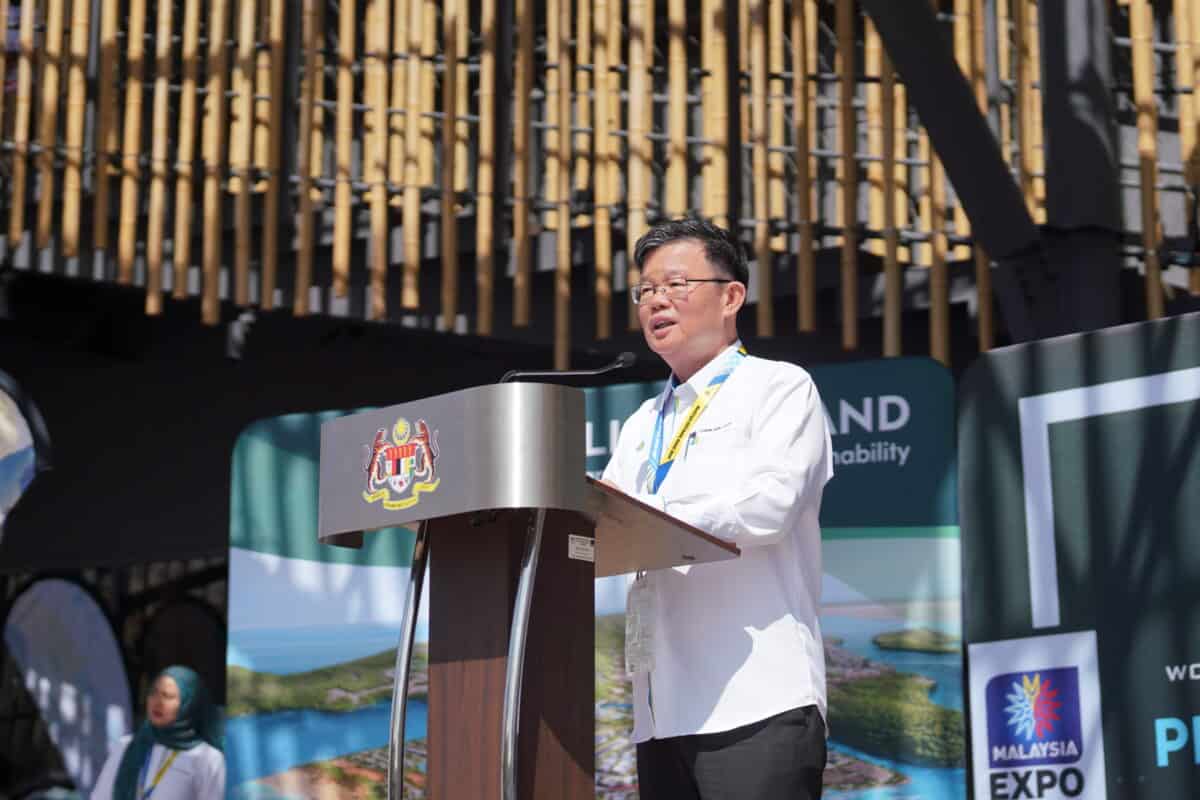GEORGE TOWN: Penang took centre stage at the World Expo 2025 here with the unveiling of more than RM5 billion worth of development projects, in a bold move to position the northern Malaysian state as a future-ready hub of innovation, sustainability and economic dynamism.
Chief Minister Chow Kon Yeow, addressing an international audience of investors, diplomats and business leaders during the opening of Penang Week, highlighted the state’s dual strengths as a global technology powerhouse and a cultural treasure.
“Penang may be small on the map, but our impact is big.
We are here not only to share our vision but to showcase the work already underway in shaping tomorrow’s economy, today,” he said.
At the heart of the showcase are key initiatives under the Penang Development Corporation’s (PDC) 2024–2028 Strategic Plan, with a combined development value exceeding RM5 billion.
These include Penang International Logistics Aeropark (PILA), a regional logistics hub positioned as Southeast Asia’s gateway; Medi-City in Bandar Cassia, a world-class medical and wellness precinct; Penang Linear Waterfront, a RM9.8 billion coastal transformation project integrating public spaces and real estate; Batu Kawan Industrial Park 3 (BKIP 3), a new frontier for semiconductors, medical devices and automation; The Coast, a sustainable RM839 million mixed-use waterfront development; GBS at Technoplex, an expansion of Penang’s digital economy and global business services sector.
Chow said one of the most ambitious projects was Silicon Island, a 920-hectare reclaimed land development in southern Penang that mirrors Japan’s own Yumeshima Island.
“Touted as a future-forward smart city, the project is expected to attract more than RM200 billion in investments and create tens of thousands of jobs in its initial phase.
Silicon Island is not just a piece of land, it is a promise that Penang will continue to lead where innovation meets sustainability,” he said.
Chow also underlined Penang’s longstanding ties with Japan, dating back to the 1970s, when Japanese companies such as Hitachi (now Renesas) helped establish Malaysia’s first Free Trade Zone in Bayan Lepas.
“Today, more than 70 Japanese firms operate in Penang, including industry giants such as Toray, Panasonic and Kobelco.
In 2023, Penang secured over RM1 billion in manufacturing investments from Japan, creating more than 500 jobs.
With bilateral trade surpassing RM14 billion in 2024, the momentum continues into 2025, with over RM8.3 billion recorded in the first seven months,” he added.
Beyond infrastructure and manufacturing, Chow said Penang is also showcasing its broader economic and cultural strengths.
Three home-grown integrated circuit (IC) design firms — Tenasic, SiliconX and SkyeChip – are representing Penang’s fast-growing semiconductor ecosystem at the expo.
He invited global investors and partners to be part of Penang’s next chapter.
“This is the spirit of Penang and Malaysia I want to highlight: when we stand together, there is no limit to what we can achieve.
Explore Penang, partner with us, and invest in a future defined by innovation, sustainability and shared prosperity,” he said, reinforcing Penang’s position on the global stage as an investment-ready, future-focused state.
